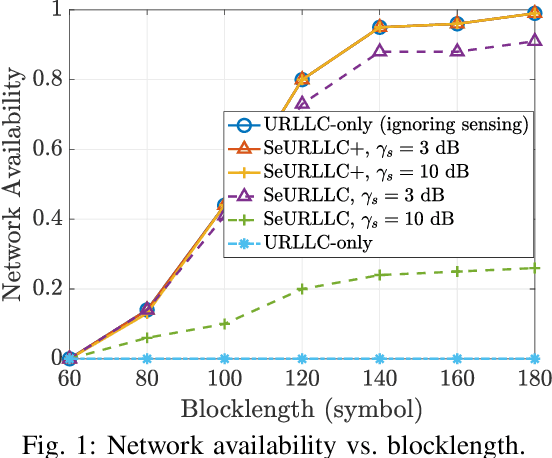Interplay between Sensing and Communication in Cell-Free Massive MIMO with URLLC Users
Paper and Code
Jan 18, 2024


This paper studies integrated sensing and communication (ISAC) in the downlink of a cell-free massive multiple-input multiple-output (MIMO) system with multi-static sensing and ultra-reliable low-latency communication (URLLC) users. We propose a successive convex approximation-based power allocation algorithm that maximizes energy efficiency while satisfying the sensing and URLLC requirements. In addition, we provide a new definition for network availability, which accounts for both sensing and URLLC requirements. The impact of blocklength, sensing requirement, and required reliability as a function of decoding error probability on network availability and energy efficiency is investigated. The proposed power allocation algorithm is compared to a communication-centric approach where only the URLLC requirement is considered. It is shown that the URLLC-only approach is incapable of meeting sensing requirements, while the proposed ISAC algorithm fulfills both sensing and URLLC requirements, albeit with an associated increase in energy consumption. This increment can be reduced up to 75% by utilizing additional symbols for sensing. It is also demonstrated that larger blocklengths enhance network availability and offer greater robustness against stringent reliability requirements.
 Add to Chrome
Add to Chrome Add to Firefox
Add to Firefox Add to Edge
Add to Edge